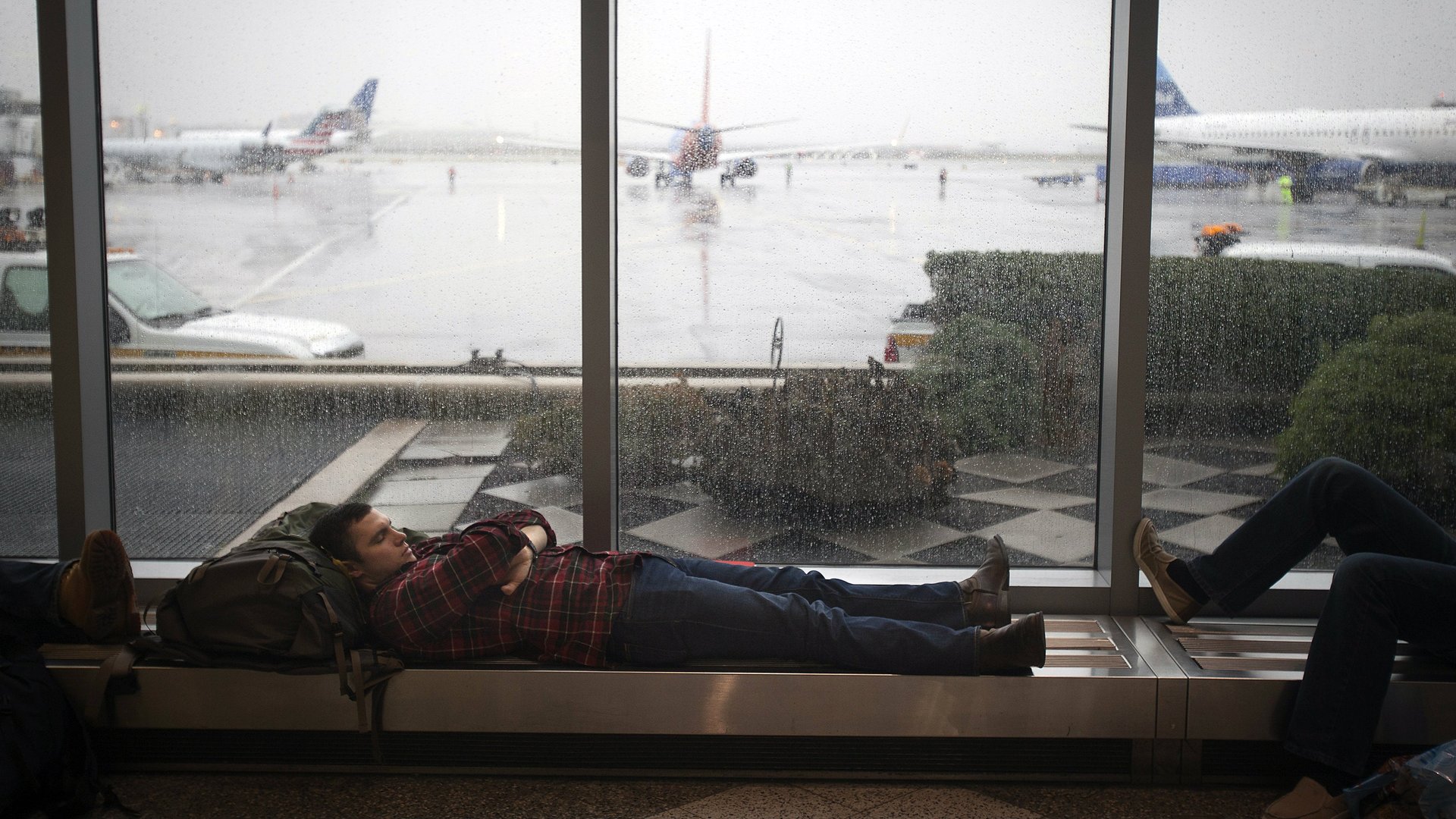To reduce jet lag, there’s one vital thing to look for when you book your flight
As every traveler knows, there are many variables to align when booking a flight: the route, the timing, and most of all the price. Only the most hardcore of aviation geeks tend to look at the small print that says what kind of aircraft you’ll be climbing aboard.


As every traveler knows, there are many variables to align when booking a flight: the route, the timing, and most of all the price. Only the most hardcore of aviation geeks tend to look at the small print that says what kind of aircraft you’ll be climbing aboard.
But if you want to avoid—or at least diminish—jet lag, it’s worth paying attention to that small print. The reason? A new generation of long range, twin-engine aircraft can improve the conditions that make you feel so rotten at the end of a long flight.
The Boeing 787 Dreamliner and the Airbus A350 XWB are the first commercial aircraft to be built using carbon fiber reinforced polymer (CFRP), a lighter, composite material which reduces fuel consumption considerably. But in addition to the fuel-saving, this material and several other design elements of these aircrafts reduce some of the major symptoms we associate with jet-lag.
Theories abound about what causes and how to beat jet lag. But it’s widely accepted that some of the main symptoms associated with long-haul flying are due to altitude and dehydration, rather than an actual time zone shift. As a study in the New England Journal of Medicine noted, the pressure in a typical aircraft cabin is similar to the altitudes on land where altitude sickness (also known as mountain sickness) occurs.
Conventional aircrafts are pressurized to mimic being at about 8,000 feet on land, similar to Bogota, Colombia’s high-elevation capital. But these newer jets’ more flexible composite material means, unlike metal, they can withstand more interior pressurization without damage to the plane’s structure, allowing an in-cabin atmosphere similar to an altitude of about 6,000 feet. That could make a significant difference to passenger comfort, the study found.
In addition, the newer planes’ cabins maintain a higher humidity level by controlling how much of passenger-generated humidity (from all those exhalations) stays in the cabin, rather than being expelled. Again, this comes down to a difference in material: Metal aircrafts are easily corroded by too much moisture, whereas CFRP can withstand a higher humidity level. While you won’t notice the spike in humidity (it’s still pretty darn dry) your eyes, nose, and throat will feel less parched after the hours spent onboard.
Finally, the better air filtration, larger windows, and higher ceilings make these flights a bit more comfortable, upping the chances you get some rest on board. Taken together, these elements can add up to a less miserable recovery from a long flight.
So how do you figure out if your flight is on one of these newer aircraft? Aviation enthusiasts go to websites such as SeatGuru and flightradar24, where you can look up the aircraft used on any flight with a flight number, but travelers don’t always have a flight number until after completing a booking.
If you’re booking directly on an airline’s website, the aircraft type will usually be included in the flight details once you’ve filled in your details and chosen an itinerary. On the flight aggregator Kayak, the aircraft type appears when you click on an individual search result for your chosen route. And it’s available on several other online travel agencies, including Expedia (where you have to request “Seat Preview”). If you can’t find the aircraft type on your chosen booking platform, you can perform a “Find Seat Maps” search on SeatGuru’s homepage using the date of departure, airline, and origin and destination (click on “I don’t have my flight number” to start).
There’s a rare piece of good news for budget travelers here: Low-cost, long-haul routes are increasingly being flown on this aircraft type. (The reduction in fuel costs is a major factor allowing airlines to offer cheap basic economy fares.) So, while you may not get to check a bag for free, hopefully you’ll feel a bit better on the other end.